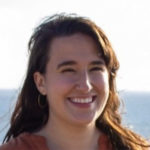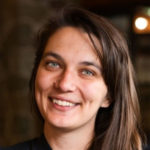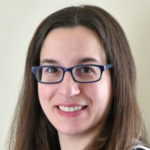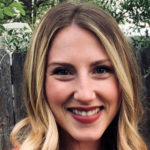 Julia Dowell, Greenaction for Health and Environmental Justice
Julia Dowell, Greenaction for Health and Environmental Justice
Julia Dowell is a Community Organizer and Policy Advocate for Greenaction for Health and Environmental Justice. She previously worked as an Environmental Scientist with the California Department of Toxic Substance Control- Hazardous Waste Management Program and as an Intern with the Waste Diversion and Recycling Team at the City of Long Beach. Julia has an M.A. in Geography with a focus on environmental, health, and climate justice and a B.S. in Environmental Science and Policy.
 Amber Todoroff, Environmental and Energy Study Institute (EESI)
Amber Todoroff, Environmental and Energy Study Institute (EESI)
Amber Todoroff is a former Senior Policy Associate with the Environmental and Energy Study Institute (EESI). Her policy work for EESI focused on coastal resilience and nature-based solutions to sea-level rise and other coastal hazards. Amber has bachelor’s degrees in English and Geography from the University of Florida and attended the University of Oxford on a Frost Scholarship, where she received a master’s degree in environmental policy.
 Florencia Sangermano, Clark University
Florencia Sangermano, Clark University
Florencia Sangermano is an Assistant Professor at the Graduate School of Geography at Clark University. She is interested in geographic information science (GIS), remote sensing, and landscape ecology applied to conservation. Before joining the Graduate School of Geography, Florencia worked at Clark Labs developing methods to facilitate the analysis and modeling of changes in climate and land cover. Additionally, she is currently the organizer of the Central Massachusetts chapter of the Society of Conservation GIS, bringing together local students and practitioners interested in the applications of spatial analysis to conservation.
 Lucy Stanfield, US Environmental Protection Agency
Lucy Stanfield, US Environmental Protection Agency
Lucy Stanfield is a Geographic Information Systems (GIS) Specialist in U.S. EPA’s Region 5 office in Chicago. She is the Disaster Debris Recovery Tool co-lead, creates maps, data, and GIS applications, and serves on the GIS Emergency Response Support Team. She is a former board member of the Illinois GIS Association and is the past Chair of the Association of American Geographers’ Applied Geography Specialty Group. She earned a B.A. in Geography and Anthropology from the University of Chicago and an M.A. in Geography from the University of Arizona.
 Jordan Burns, National Renewable Energy Laboratory
Jordan Burns, National Renewable Energy Laboratory
Jordan Burns is a researcher in the Resilient Systems Design and Engineering Group within NREL’s Energy Security and Resilience Center. Her areas of expertise include natural hazard risk modeling, mapping, mitigation planning, stakeholder engagement, and communicating technical information to decision makers. Jordan focuses on helping communities quantify and communicate the benefits of energy resilience. She joined NREL after spending several years as a risk analyst and project manager for the Federal Emergency Management Agency (FEMA).
